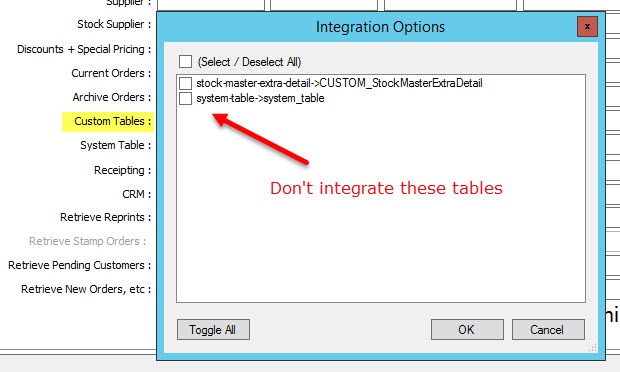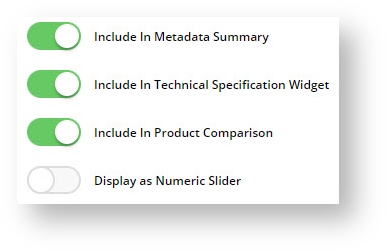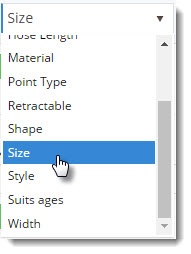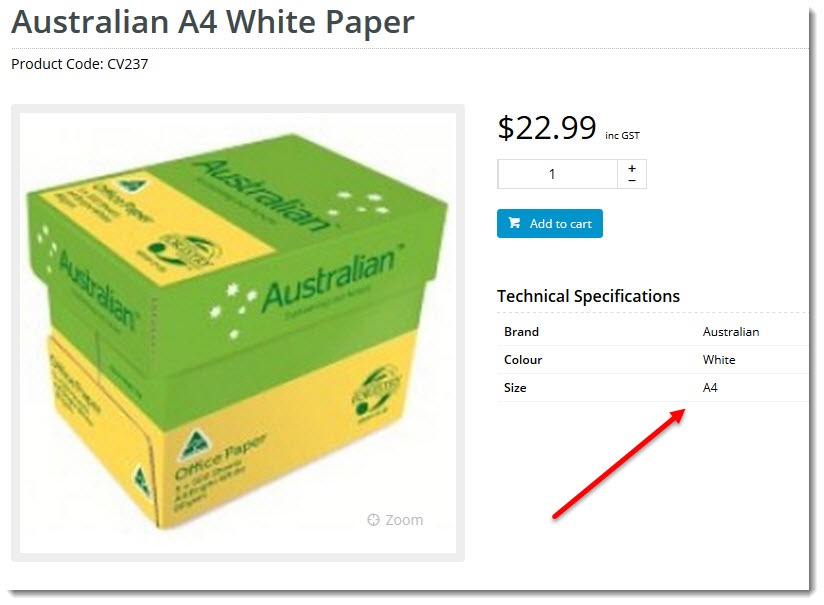Traditionally, product feature data have always been integrated from the ERP. You can now maintain features in the CMS.
Commerce Vision recommends that this task be done on all products at once rather than in stages to avoid products without features being excluded from searches.
Prerequisites
In order to maintain product features online, here's what needs to be configured:
Enable Product Features
To enable Product Features:
- In the CMS, go to Settings → → Settings → Feature Management → Products & Categories → Product Features.
- Toggle ON Product Features.
Create Groups (optional)
You may want to create feature groups to organise specific features together. For instance, you may want to identify Australian brands from other brands. So you could create a 'Country of Origin' group, and add 'Australian', 'USA', 'non-Australian', etc, to this group,
To create a feature group:
- Go to Settings → → Settings → Feature Management → Products & Categories → Product Features.
- Click Configure.
- Click Add Group.
- Enter the feature group name.
- To save and enter another group, click Save. To exit from this page, click Save & Exit.
You can now add or create features and add them to this group in Product Features.
Integrator Custom Tables Setting
- Open the Integrator client and click the 'Set Options' link for Custom Tables.
- Ensure these tables are not enabled: "stock-master-extra-detail->CUSTOM_STockMasterExtraDetail" and "sytem-table→system_table".
If they are selected, de-select them and click OK.
Once your site is configured as above, you're ready to maintain all of your product feature metadata in the CMS!
Create a feature
- In the CMS, go to to Products & Categories → Product Features.
- Click Add New Feature.
- Enter a suitable name for the feature.
- Toggle ON/OFF the display options as required. See Product Feature Visibility for further information.
- Include in Metadata Summary:
- Include in Technical Specification Widget:
- Include in Product Comparison:
- Display as Numeric Slider:- Click Save & Exit.
Assign features to products
- In the CMS, navigate to Products & Categories → Product Maintenance.
- Search for the product you wish to update and click Edit.
- Scroll to the Features section.
- Click Add Feature and select from the dropdown.
- Enter a value for this product.
- To add another product feature, click Add Feature and go through steps 4-5.
- Once you have finished, click Save.
Presto!
Depending on the display settings you chose, your feature info will now display in various contexts as customers browse your site. Nice work.
| Product List | |
| Product Detail | |
| Product Compare |
Additional Information
No more editing first in the ERP then integrating to the web. With Product Features, you can see and update product metadata online. With our Best Practice Design sites, you can maintain all of your feature metadata via the CMS.
| Minimum Version Requirements |
|
|---|---|
| Prerequisites |
|
| Self Configurable |
|
| Business Function |
|
| BPD Only? |
|
| B2B/B2C/Both |
|
| Third Party Costs |
|
Related help












